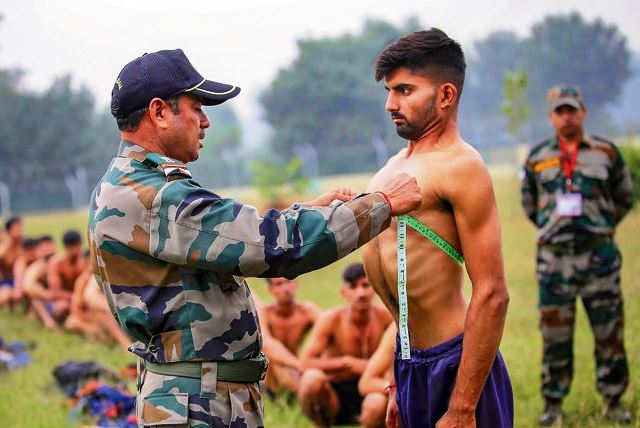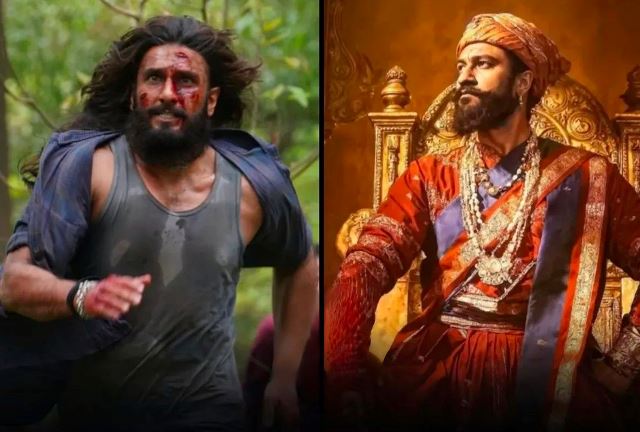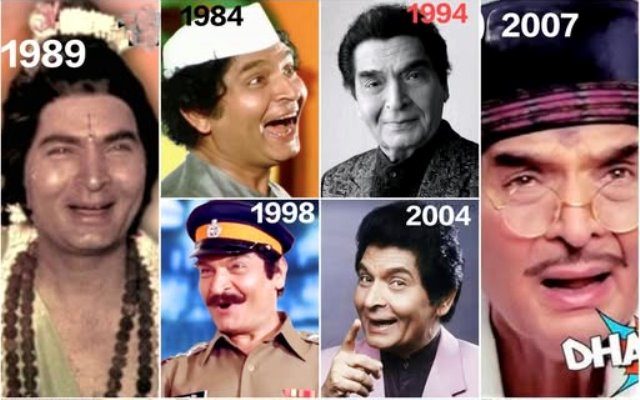
Can Compulsory Military Service Solve India’s Job Crisis?
Last weekend in a video story on deKoder, veteran journalist and India’s best-known psephologist Prannoy Roy’s new website, a cross-section of young voters that he interviewed in Bihar nearly unanimously listed jobs and employment as being their topmost concerns in the ongoing mammoth Indian parliamentary elections, two phases of which have been completed and five more are to be held.
Nearly 200 million of the 969 million registered voters who are eligible to vote in the elections are between 20 and 29 years old and, not only in Bihar but everywhere in India, the biggest focus of this demographic slice of the population is on jobs and employment.
That is no surprise. Out of India’s working population of a billion people, only 100 million or just 10% have formal jobs. The rest, an estimated 900 million (twice the population of the European Union and three times the population of the US) are engaged in casual work or are unemployed. A large proportion of them are in rural areas where 833 million Indians live.
India, with more than 1.4 billion people, has more than 50% of its population below the age of 25 and more than 65% below the age of 35. These are huge numbers but, if seen in the context of employment and jobs, theý are scary numbers. According to some estimates, even if the government’s state-run incentive schemes to spur manufacturing in India succeed, they will create barely seven million jobs, a tiny drop of what is really required.
Maths and Stats of Jobs in India
Breaking down the aggregate numbers of jobs in India reveals eye-opening facts. Agriculture accounts for the largest share of the workforce in India, mainly in the rural areas, but it contributes the least to the country’s GDP. Agriculture and allied sectors employ 44.9% of the male workforce and 62.7% of the female workforce but those sectors contribute less than 17% of GDP.
Industry, which includes manufacturing, construction and other related activities employs less than 17% of the male workforce and 16% of females. The sector contributes around 26% of GDP. The biggest share of the workforce is employed in the services sector–more than 27% of the male workforce and around 22% of females. Services, which includes education, health, trade, transport, IT/BPOs, and financial services, contribute more than 48% of GDP.
Although the majority of Indians are employed in agriculture, in fact, those statistics could be misleading. Many Indians in rural areas have no alternatives than to choose underpaid or often unpaid occupations related to agriculture. This is a phenomenon known as “disguised unemployment” where the productivity of a worker is very low or even zero. In other words, if some of them were to leave the farms where they ostensibly work, the productivity on the farms could actually increase.
A Military Solution?
The sheer size of India’s working age population makes the problem of unemployment huge and daunting. It is not just the fact that jobs are not there in the numbers that are required. Despite the huge numbers of Indians joining the workforce each year and looking for employment, there is also a serious supply side problem. This is a problem of mismatch. Employers in India say that it is difficult to hire workers who have the required skills. Education at primary and secondary levels is nearly universal in India but the systems for vocational training and higher education are still inadequate.
For example, there are 23 Indian Institutes of Technology (IITs), which offer around 17,000 seats every year, but the competition to get into them can be fierce. This year more than a million students took the entrance exam. The situation is no better in lower-tier institutes and vocational schools, many of which also offer courses that are less than adequate for employers looking for skilled workers.
In such a situation, could there be an unconventional solution to India’s youth unemployment problem like, say, compulsory conscription into the defence services? It’s a controversial idea, fraught with several risks, but could it be worth it?
Unlike many countries, including Israel, South Korea, Finland, Switzerland, Greece, Brazil, and Norway, India does not have a system of conscription where it is compulsory for young men (and in some cases, women too) to do military service for varying periods of time. In recent years, some countries that had done away with the system have been renewing conscription programmes – notably in the Baltic states of Estonia, Latvia, and Lithuania, which won independence from the erstwhile Soviet Union. In those states, the renewal of conscription reflects the threat of aggression by Russia.
In countries that have had a policy of conscription, it has promoted national unity by bringing citizens together and fostered an appreciation for the sacrifices made by military personnel. It has also created an active reserve of trained personnel who can quickly be deployed in response to national security threats. Besides, military service also imparts various skills in individuals.
A Controversial Case for Conscription
All of those could be advantageous for India. A spirit of national unity in a country as diverse as India would be welcome, and in a world where national security risks are increasing, there is no harm in having a dynamic reserve of trained military personnel. Also, the benefits of the military’s training and discipline for India’s huge population of youth are obvious.
It will not be easy to implement conscription, though. Two years ago when the Indian government introduced the Agnipath scheme, it faced huge opposition.
The Agnipath program is a recruitment initiative for the Indian Army, Air Force, and Navy, and it is designed as a “tour of duty” style scheme for recruiting soldiers below the rank of commissioned officers into the three services. The recruits, known as Agniveers, serve for a four-year period and form a new military rank. It is, however, voluntary and not compulsory.
The government’s rationale for the programme was that it would provide a younger and more tech-savvy military force; and it would provide India’s youth with the opportunities to gain military training and experience. At the end of their service period, they would also get a severance package, known as Seva Nidhi, to help them get alternative employment and careers.
The main opposition to Agnipath was from defence aspirants, military veterans, opposition leaders, and certain states. They argued that the scheme could potentially affect the future of serving personnel, impact the professionalism, ethos, and fighting spirit of the forces, and possibly lead to the militarisation of civil society. There’s also concern about the lack of job security after the four-year term ends, as only 25% of Agniveers would be selected for regular military service for a full term of another 15 years, while the rest would be demobilised.
Yet, Agnipath Has Been a Hit
By all accounts the programme has found takers from the target group it addresses–youth aged between 17.5 and 21. In 2024, the Indian Army received a significant increase in applications for the Agniveer program compared to the previous year. A total of 12.8 lakh youth, including both men and women applicants, have applied to become Agniveers. This is 10% higher than the 11.3 lakh applicants in 2023. The planned recruitment of Agniveers for the armed forces annually is roughly 46,000, with 40,000 for the Army and the remaining 6,000 for the Navy and the Air Force combined.
If the Agniveer programme has worked, would a compulsory conscription scheme also work? India has always had a voluntary armed force without any conscription laws. However, the Indian constitution has a provision in Article 23 that allows the government to mandate conscription in the interest of national security and public welfare. Yet, India has never applied this provision.
Conscription has gained attention in recent years due to reports of recruitment shortfalls, particularly for officer positions, since 2008. This shortfall in recruitment can be a threat to national security. Since India’s Independence, there have been several systems of compulsory military training for students in public schools and universities, although conscription was not mandatory.
The National Cadet Corps (NCC), formed in 1948, aimed to generate youth interest in defending the country. In 1962, China invaded Indian territory, leading to the implementation of specific emergency recruitment regulations and, through the 1970s, NCC cadets were trained in handling weapons and basic techniques of warfare such as tank and artillery training.
Backlash Versus Benefit
Many argue that conscription is a violation of personal freedom and choice. Some are opposed to it because of moral, ethical and religious reasons. There is also the question of whether military training can impart skills that are relevant for civilian life.
The most serious issue that India faces is that of tackling unemployment. Only 100 million Indians have formal jobs.According to the Centre for Monitoring the Indian Economy, in the October-December 2023 quarter, joblessness among those in the age group of 20 to 24 grew to 44.49% from 43.65% in the previous quarter of July to September 2023. On the other hand, it stood at 14.33% for the age group of 25-29 compared to 13.35% in the July-September quarter.
These are sobering numbers and they are a wake-up call for policy makers. No matter who nearly a million Indians will vote into power in the next few weeks, dealing with youth unemployment and the job crisis will have to be the most important task, and the way forward could be by thinking out of the box. Could conscription be a non-conventional solution?
For more details visit us: https://lokmarg.com/



